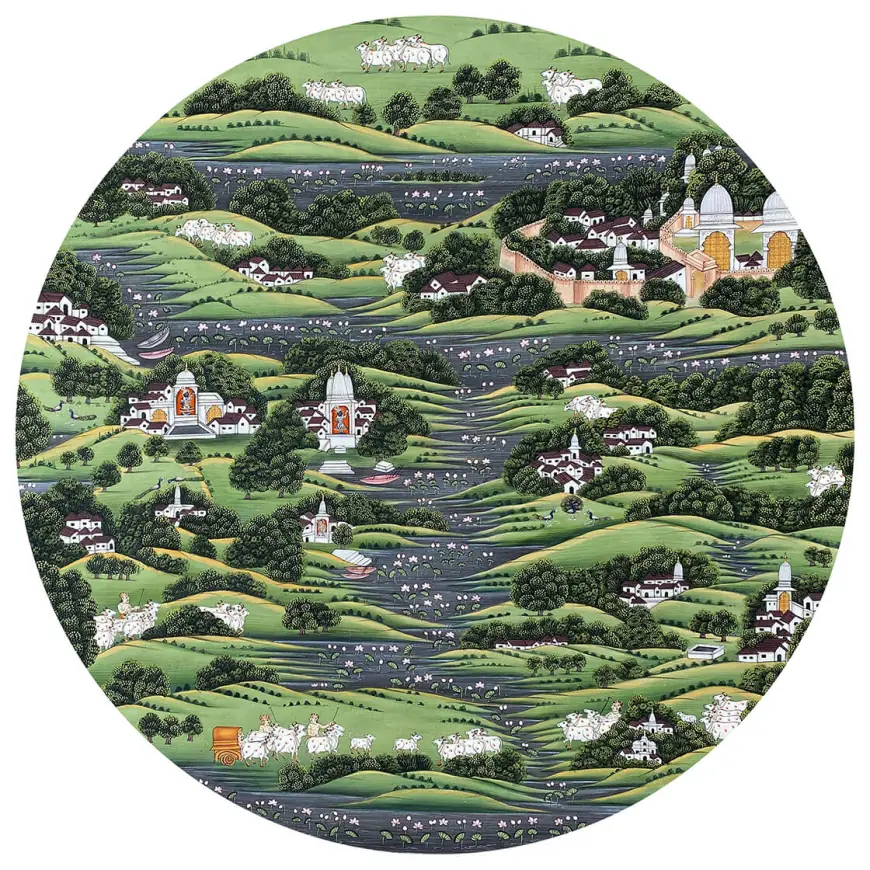Kota Painting: Capturing the Grandeur of Rajasthan’s Artistic Legacy .
Kota Painting is a traditional Rajasthani miniature art form that originated in the Kota region, flourishing during the 18th century. Known for its unique blend of Mughal refinement and Rajput boldness, Kota Painting often depicts royal life, hunting scenes, processions, and courtly love. Each work is rich in detail, from expressive faces and graceful trees to flowing water and intricate borders, turning every piece into a visual story. Today, artists and platforms like Pichwai Art by Pooja Singhal are working to preserve this heritage, blending tradition with modern relevance. Kota Painting continues to captivate art lovers with its elegance and cultural depth.

Discovering the Forgotten Elegance of Kota Painting
So here’s something I didn’t expect to get excited about — Kota Painting. A few weeks ago, I was at this quiet heritage museum in Rajasthan (kind of on a detour), and right there on a faded wall was this artwork that looked like it belonged in another world. It wasn’t loud or flashy. But it felt rich. Calm. Detailed in a way modern stuff rarely is. That was my first encounter with Kota Painting — and it stuck.
What Exactly Is Kota Painting?
Let’s keep it simple: Kota Painting is a traditional Rajasthani miniature art form that flourished in the Kota region, mostly during the 18th century. It’s closely tied to royal courts, and you can usually spot scenes of hunting, processions, or courtly love. There’s this unique blend of Mughal finesse and Rajput boldness in it — fine lines, soft colors, but also a lot of movement and story.
If you look closely, you’ll see how much thought went into each character, each posture. It’s storytelling — but visual. That’s what makes Kota Painting so timeless.
It's More Than Just History on a Canvas
For me, the beauty of Kota Painting lies in its balance. There’s action — warriors, horses, elephants — but there’s also quiet grace in the way trees bend, how water flows, how expressions are drawn. It feels like poetry with a paintbrush.
And the best part? These aren’t just decorations. They carry cultural weight. They reflect not just the royals, but their world — their beliefs, aesthetics, and values.
Artists Who Keep Tradition Alive
In the midst of digital everything, it’s honestly refreshing to see artists trying to keep such styles alive. I came across Pichwai Art by Pooja Singhal, and though she’s known more for Pichwai, there’s a deep respect for Indian traditional forms in her work. She doesn't replicate — she reimagines.
What I love about Pichwai Art by Pooja Singhal is how it bridges that gap between ancient and modern. She creates with soul — and that’s rare.
Why Kota Painting Still Matters
You might wonder, in today’s fast-scrolling world, why care about something like Kota Painting? Well, for me, it’s because it slows you down. It asks you to notice details. It invites you to connect — not just with art, but with the past.
I believe Kota Paintings isn't just for museums. It belongs in homes, in books, on walls, anywhere people appreciate craft and story
What's Your Reaction?
 Like
0
Like
0
 Dislike
0
Dislike
0
 Love
0
Love
0
 Funny
0
Funny
0
 Angry
0
Angry
0
 Sad
0
Sad
0
 Wow
0
Wow
0



















































